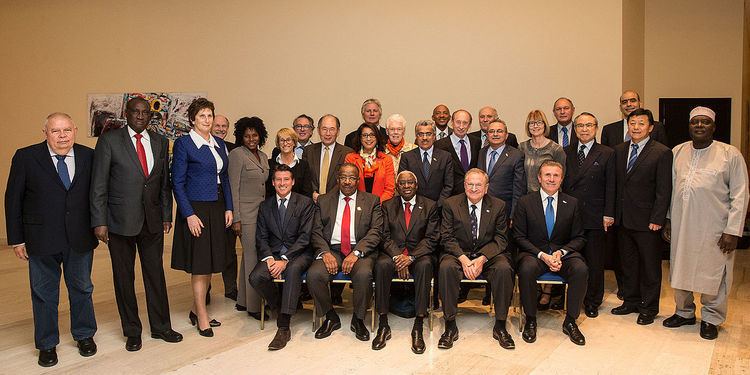The recent decision by the International Association of Athletics Federations (IAAF) to allow Caster Semenya to retain her World Championship title represents a pivotal moment not just in athletics, but also in the ongoing discourse regarding gender identity and fairness in competitive sports. This resolution could signify a monumental shift in how we perceive and regulate gender within the athletic realm, prompting an urgent necessity to dissect the ramifications of such a stance.
At the heart of this debate lies Caster Semenya, a South African middle-distance runner whose very essence has been scrutinized and questioned since she burst onto the world stage. The complexities of her biological makeup—her naturally high testosterone levels—have invoked fervent discussions about the definitions of ‘woman’ and ‘female’. The IAAF’s decision is not merely a bureaucratic allowance; it is an acknowledgment of the intricate tapestry of human biology and the myriad of ways it intersects with sport.
Long have we seen sports governed by rigid definitions—a dichotomous view that separates people into two distinct categories: male and female. Such binary classifications ignore the reality that human beings exist on a spectrum. Semenya’s situation elucidates the inadequacy of these definitions—her essence blurs the lines that governing bodies have historically clung to, creating a maelstrom of contention. By allowing her to keep her championship, the IAAF has, even if implicitly, acknowledged the need for a new paradigm.
This new paradigm demands a reassessment of the policies that govern female athletics. The IAAF’s policy was often cloaked in the guise of ‘fairness’—narratives that painted elite athletes like Semenya as having an ‘unfair advantage’. However, one must interrogate this notion. What constitutes an ‘advantage’ in sports? Is it herculean physicality, relentless training, or perhaps even a genetic predisposition? Dissecting this question reveals the fragility of the argument against Semenya—how arbitrary it becomes when examined through the lens of diverse human experience.
Critics of the IAAF’s decision herald it as a potential threat to the integrity of women’s sports. However, one must pause to ponder: What integrity are we preserving? The integrity of a competition that was founded on the exclusion of certain bodies? The integrity that only seeks to validate a narrow understanding of gender? Such arguments often fall prey to a disingenuous nostalgia for a past that has never fully existed. Throughout history, women in sports have faced obstacles, not solely from competing athletes but from patriarchal systems that dictate who belongs.
Consider this—what would it look like if we redefined what it means to compete as a woman in sports? What if Caster’s form of femininity becomes not an anomaly to be regulated out but a representation of the nuanced realities of gender? If the IAAF chooses to embrace this shift, could it unleash a wave of inclusivity that transforms competitive athletics into a domain where varying bodies and identities coalesce rather than clash? This progressive transition could break down barriers and challenge the exclusionary practices that have long plagued women’s sports.
In a society that increasingly values diversity and inclusion, Semenya’s case beckons us to question deeply entrenched ideologies. It propels us into a realm where we begin to understand that the fight is not simply for one individual athlete but for a larger societal acceptance. It’s about recognizing the multifaceted nature of identity and the right to compete, irrespective of biological determinism.
Furthermore, the implications of this decision extend beyond athletics. Imagine a future where sports are no longer battlegrounds for outdated gender politics but arenas for celebrating human variation. If Semenya’s victory symbolizes the opening of floodgates for dialogue and revision of existing frameworks, what other reforms could ripple through not just sports, but society as a whole? Could this be the catalyst for an evolution in how we view health, identity, and personal achievement in a world that is so often bound by limiting binaries?
As we stand on the precipice of this potential transformation, it is essential to recognize that the journey is fraught with challenges. Those who cling to traditionalist viewpoints may resist fervently, invoking law and order, coupled with a fear of the unknown. However, progress invariably invites discomfort, and as history has shown, the narratives that initially evoke fear can eventually cultivate understanding and empathy. Thus, the IAAF’s decision to allow Semenya to keep her title may very well serve as a springboard not just for evolving sports policies, but for societal change at large.
In conclusion, the IAAF’s allowance for Caster Semenya to retain her World Championship is not simply about one athlete’s triumph—it symbolizes a broader and vital reassessment of our understandings of gender and sport. It is a step, albeit small, towards a future that embraces inclusivity, recognizes the spectrum of human experience, and challenges the dialogue surrounding what it truly means to compete as a woman. The world watches with bated breath, ready for the ripples of change that this decision may catalyze, intrigued by the possibilities of a reimagined athletics landscape.
